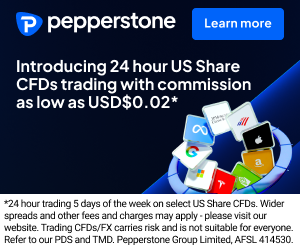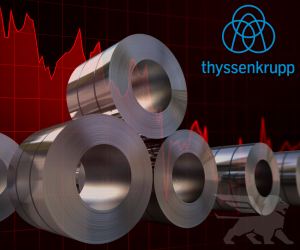THYSSENKRUPP STOCK: WHAT HAPPENED IN 2025
Thyssenkrupp AG (TKA.DE) has had a blockbuster yet choppy 2025. Shares surged triple-digits year-to-date as investors front-ran the spin-off of its defence arm, TKMS, then slid when that pure-play listed and stole the limelight. As of 5 November 2025, the Xetra close sits at €9.26 (-1.57% on the day) with €5.765bn market capitalisation, 453,248 volume, +130.45% YTD and +187.38% over 12 months. Drivers? A blowout TKMS debut, a bruised steel unit navigating job cuts and high energy costs, and a parent morphing into a cash-rich holding with net financial assets around €4.3bn. Below, we map the price action, the catalyst timeline, why the volatility persists, and what could move the shares next—delivered in crisp, data-first British English with a dash of meme-trader realism.

The 2025 story: price action and milestones
First, the scoreboard. On 5 November 2025, Thyssenkrupp (TKA.DE, Xetra) closed around €9.26, down 1.57% on the day, with a market capitalisation of roughly €5.765bn, turnover of 453,248 shares, and eye-watering returns of about +130.45% year-to-date and +187.38% over one year.
What changed the game: on 20 October 2025 Thyssenkrupp spun off 49% of its warship builder, Thyssenkrupp Marine Systems (TKMS), and listed it in Frankfurt. Shareholders received 1 TKMS share for every 20 Thyssenkrupp shares (record date 17 October), with any fractional entitlements sold and cash-settled. TKMS opened near €60, ripped intraday towards triple digits, and finished day one ~€81.10; meanwhile, Thyssenkrupp fell ~18–20% as money rotated into the cleaner defence stub.
Important context before the spin-off: Marine Systems’ order boom and a solid operating print had already put a rocket under the parent’s shares. In February, management hiked free-cash-flow guidance citing submarine advances and German Navy prepayments, and in Q3 FY24/25 they flagged steady progress but reiterated that Steel Europe remained the problem child.
Price action at a glance (trader’s digest)
Before October: shares trend higher on defence momentum and break-up optionality; liquidity improves and short interest fades.
20 Oct: TKMS lists; closes ~€81.10 after spiking above €100 intraday; TKA drops ~18–20% on rotation to the pure-play.
Late Oct: noise from a Nucera downgrade (hydrogen unit) and steel management changes adds chop.
Early Nov: consolidation near €9–10 as the market re-bases parent-only economics against sum-of-the-parts upside.
Key events timeline
Jan–Mar 2025: submarine orders/advance payments underpin guidance; backlog swells. Significant rally contributes to early YTD gains.
Q3 FY24/25 (reported recently): “solid business performance”; restructuring still centres on steel. Market reaction mixed.
20 Oct: TKMS spin-off lists on Frankfurt; strong debut, peak above €100; TKA off ~19–20%.
22 Oct: Deutsche Bank cuts Thyssenkrupp Nucera to Hold on slower hydrogen growth; modest sentiment drag.
23 Oct: TKMS added to Vienna Stock Exchange’s Global Market—visibility boost; limited direct TKA impact.
Late Oct–Nov: Steel boss exit confirmed; Marie Jaroni named head of Steel Europe; job-cut plan and “lean holding” message reinforce restructuring path.
TKMS spin-off: the quick facts
Legal name: TKMS AG & Co. KGaA; Ticker: TKMS; Listing: Frankfurt Prime Standard (20 Oct 2025).
Ratio: 1 TKMS for 20 TKA (record date 17 Oct); fractional shares cash-settled.
Ownership: 51% retained by TKA; 49% distributed to shareholders.
Debut tape: opened ≈€60, intraday >€100, closed ~€81.10; valuation north of €5bn.
Backlog: ~€18.6bn, tripled in five years; dividend policy targeted from 2027 at 30–50% of net income.
Why the volatility: defence upside vs steel gravity
Defence spin-off success. TKMS arrived as Europe’s flagship conventional-submarine and surface-combatant pure play with an order book of roughly €18.6bn and mid-term ambitions: ~10% annual sales growth, EBIT margin >7%, and a 30–50% dividend payout starting in 2027. That cocktail commands a “pure-play premium”, so capital rotated into TKMS at listing—exactly why TKA slumped on day one even though TKA still owns 51% of TKMS.
Security overlay (aka Berlin’s veto). To safeguard national interests, Berlin struck a security agreement for TKMS: pre-emptive rights if TKA sells ≥5% and approval rights if any single buyer crosses 25%. That’s not a cash flow item, but it shapes M&A optics and keeps the asset “strategic”.
Steel sector struggles. Europe’s steel remains a slog—high power costs and cheap imports bite. Thyssenkrupp’s steel plan includes up to 11,000 job reductions and capacity trims; workers approved a restructuring package in September. The market discounts these headwinds until clearer visibility on partnerships, decarbonisation funding, and tariff backstops emerges.
From conglomerate to holding. Management is executing a break-up/portfolio strategy: spinning off marine, preparing other segments for more autonomy, and signalling a “financial holding” future. Balance-sheet signalling helps—net financial assets hovered around €4.3bn and the group says it is largely free of bank and capital-market debt—giving TKA optionality for fixes and deals.
Leadership and sentiment jolts. The steel chief’s exit and Marie Jaroni’s appointment tried to reset the narrative; meanwhile, the hydrogen affiliate Thyssenkrupp Nucera took an analyst downgrade on slower project momentum—small items individually, but they add to tape volatility.
How the market is pricing the “break-up stub”
Post-spin, TKA trades like a “holding company stub”: 51% of TKMS plus steel, materials trading, auto components and decarbonisation technologies. Investors weigh the embedded TKMS value against steel liabilities and restructuring costs. Sell-side has leaned constructive on the break-up arithmetic; for instance, Kepler Cheuvreux lifted the target to €13.80 in October, sticking with Buy.
Sum-of-the-parts lens: TKMS stake (mark-to-market) + adjusted equity value of remaining businesses − pension/steel drag = parent NAV; the discount to this NAV is the “holdingco gap”.
Flow dynamics: passive and factor money rebalance after index events; single-stock longs migrate to defence; special-sits funds target the holdingco discount.
Policy wildcards: EU measures on unfair steel imports and power relief can compress the steel risk premium quickly.
FX & rates: EUR strength/weakness and power forwards feed into steel spreads and materials margins.
Global order book: Canadian submarine bid activity and European fleet upgrades lengthen TKMS visibility.
A note on TKMS visibility outside Germany
Beyond Frankfurt, TKMS was added to the Vienna Stock Exchange’s Global Market on 23 October—useful for liquidity and cross-border discovery, albeit not fundamental to TKA’s cash flows.
Product-wise, TKMS builds conventional submarines (e.g., Type 212/214 family), frigates and associated naval electronics via ATLAS Elektronik—core competencies that anchor the backlog and support the pure-play rerating case.
What to watch next: catalysts, risks, playbook
Near-term numbers. The company’s investor calendar points to the Annual Report FY 2024/2025 on 9 December 2025. Expect full-year KPIs, cash-flow colour and restructuring detail—timing that matters for year-end positioning.
Steel strategic options. With the prior Křetínský joint-venture path unwound, attention has shifted to talks with India’s Jindal Steel. Any binding outline on ownership, capital commitments and de-risking of pensions/CapEx could be a major stock inflection.
Policy watch. France and others have pushed for tighter protection against Chinese steel imports; broader EU actions on quotas/tariffs or energy relief would alter Steel Europe’s medium-term economics. This is a key swing factor for the holdingco discount.
TKMS glidepath
For TKMS itself, the medium-term thesis is now visible: an €18.6bn order backlog, a defence-spending super-cycle, and a policy signpost that includes Berlin’s security rights. Dividend initiation is targeted for 2027 with a 30–50% payout, providing a clean income profile as programmes convert to cash. Watch Canadian submarine procurement diplomacy, where Germany and Norway have been actively promoting the Type 212CD.
Investor playbook (no-nonsense)
Rebuild the NAV: mark the 51% TKMS stake to market; haircut steel for execution risk; add other segments; compare to TKA’s equity value to size the holdingco discount.
Track steel policy & partner news: EU trade actions, energy-cost relief and any Jindal term sheet will move the denominator in your SOTP faster than spreadsheets suggest.
Follow the calendar: model scenarios around the 9 Dec FY print; watch quiet-period windows for guidance risk.
Mind TKMS disclosures: prospectus/IR updates on margins, working capital and bank guarantees (post renegotiation of parent guarantees) affect the embedded value.
Sizing & risk: steel headlines can overwhelm defence serenity; position with that volatility budgeted.
Bottom line (fresh idea)
Thyssenkrupp has morphed from a distressed industrial into a break-up holding in 2025. The TKMS spin-off crystallised value and left a parent that’s cash-cushioned, policy-sensitive and execution-heavy. One fresh angle for sophisticated investors: treat TKA as a dynamic “stub” that you re-price against live TKMS marks and steel de-risking milestones. When policy or partner news compresses steel’s discount rate, the holdingco gap can narrow quickly; if steel drags, the embedded TKMS floor still helps. That’s the meme-trader translation: defence gave you the rocket fuel, steel gives you turbulence, and the trade is managing both with a hard calendar, not vibes.









